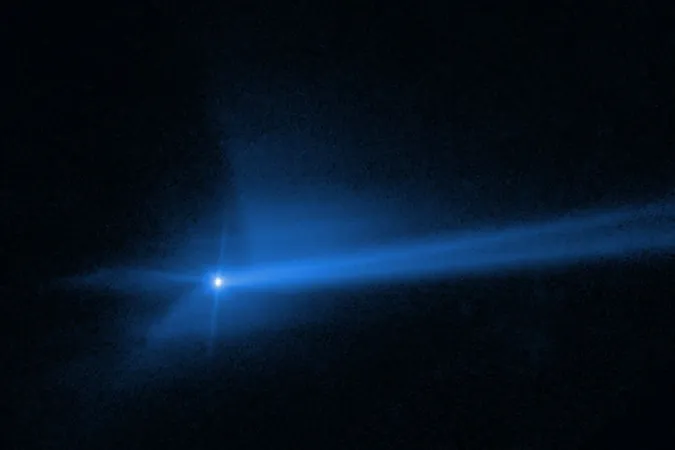
Humanity's First Artificial Meteor Shower on the Horizon: DART Mission Debris Set to Illuminate the Night Sky!
2024-11-04
Author: Emma
Introduction
In an astonishing twist of fate, debris from NASA's groundbreaking Double Asteroid Redirect Test (DART) mission may soon lead to the first-ever artificial meteor shower. On September 26, 2022, DART collided with a 160-meter-wide asteroid named Dimorphos, representing a bold leap in our ability to safeguard Earth from cosmic threats.
The DART Mission
The DART mission was a pioneering experiment designed to demonstrate our capability to deflect potentially hazardous asteroids. The impact successfully altered Dimorphos's orbit around its larger companion asteroid, Didymos, by over 30 minutes, showcasing humanity's defensive prowess against space rocks on a collision course with our planet.
The Upcoming Meteor Shower
This upcoming meteor shower is unique, as it arises from a deliberate human endeavor. Typically, meteor showers occur when Earth passes through clouds of debris from comets or asteroids. However, scientists are excited about the possibility of watching fragments from the DART mission light up the atmosphere in what could be a spectacular celestial event.
Predicting the Debris Dispersion
Thanks to the precision of the DART mission, astronomers can predict the time and place where this debris will enter Earth's atmosphere. A team of researchers has conducted simulations involving over three million particles of various sizes and velocities, aiming to understand how this substantial volume of debris will disperse across the Solar System.
Scientific Insights
Eloy Peña-Asensio from the Politecnico di Milano, who led the research, stated, "We identified ejecta orbits compatible with the delivery of meteor-producing particles to both Mars and Earth." The simulations revealed that the smallest and fastest particles might reach Earth within the next seven years. While these fragments won't pose any threat to our safety, they could create a mesmerizing meteor shower—albeit with unpredictable visibility.
Particle Size and Destination
Moreover, the research highlights that smaller particles are more likely to travel quickly enough to enter our atmosphere, while larger particles may have a greater chance of heading towards Mars. "We were amazed to discover that some centimeter-sized particles could reach the Earth-Moon system and produce a new meteor shower," explained Josep M. Trigo-Rodríguez from the Spanish Institute of Space Sciences.
Anticipation for the Event
The world now eagerly awaits this extraordinary event, with predictions suggesting that the meteor shower will be most observable in the Southern Hemisphere during May. Observatories around the globe will be on high alert, ready to capture this monumental occasion of humanity leaving its mark in the cosmos. Get your telescopes ready—this is one astronomical spectacle you won't want to miss!









 Brasil (PT)
Brasil (PT)
 Canada (EN)
Canada (EN)
 Chile (ES)
Chile (ES)
 España (ES)
España (ES)
 France (FR)
France (FR)
 Hong Kong (EN)
Hong Kong (EN)
 Italia (IT)
Italia (IT)
 日本 (JA)
日本 (JA)
 Magyarország (HU)
Magyarország (HU)
 Norge (NO)
Norge (NO)
 Polska (PL)
Polska (PL)
 Schweiz (DE)
Schweiz (DE)
 Singapore (EN)
Singapore (EN)
 Sverige (SV)
Sverige (SV)
 Suomi (FI)
Suomi (FI)
 Türkiye (TR)
Türkiye (TR)